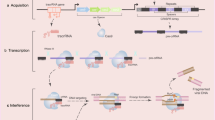Abstract
In two androgen-dependent (FGC and P70) and two androgen-independent (LNO and R) sublines of the prostate cancer model LNCaP numerical and structural aberrations of chromosome 8 were investigated in detail. The techniques used were whole chromosome paint (WCP) and fluorescence in situ hybridization (FISH) with three cosmid probes mapping to different parts of the p-arm (D8S7 (8p23.3), LPL (8p22) and PLAT (8p11.1)). By WCP all four cell lines showed four copies of chromosome 8 in most cells. However, FISH demonstrated that in all sublines deletions in the 8p region were present. The majority of both FGC and P70 had two copies of cosmids D8S7 and LPL. The cosmid PLAT showed a broader distribution (1–4 copies), especially in P70. Compared with FGC and P70, both LNO and R showed a larger number of copies (3 or 4) of all three cosmid loci. It is discussed that this difference is probably the result of nondisjunction as a reaction to loss of other sequences on 8p, possibly the tumor suppressor gene (TSG) mapping to 8p21. The fact that both sublines LNO and R are androgen-independent raises the possibility of a link between TSG loss on 8p and androgen independence.
Similar content being viewed by others
Author information
Authors and Affiliations
Additional information
Received: 2 May 1997 / Accepted: 27 October 1997
Rights and permissions
About this article
Cite this article
König, J., Teubel, W., van Steenbrugge, G. et al. Characterization of chromosome 8 aberrations in the prostate cancer cell line LNCaP-FGC and sublines. Urological Research 27, 3–8 (1999). https://doi.org/10.1007/s002400050082
Issue Date:
DOI: https://doi.org/10.1007/s002400050082




